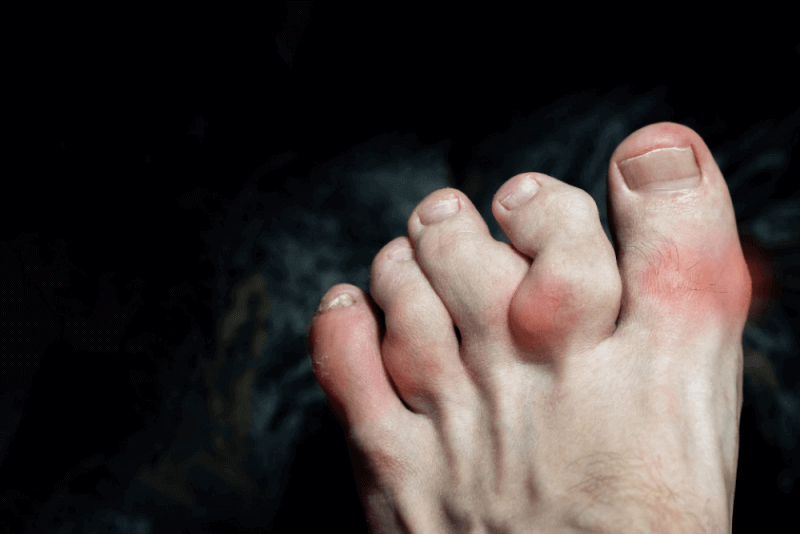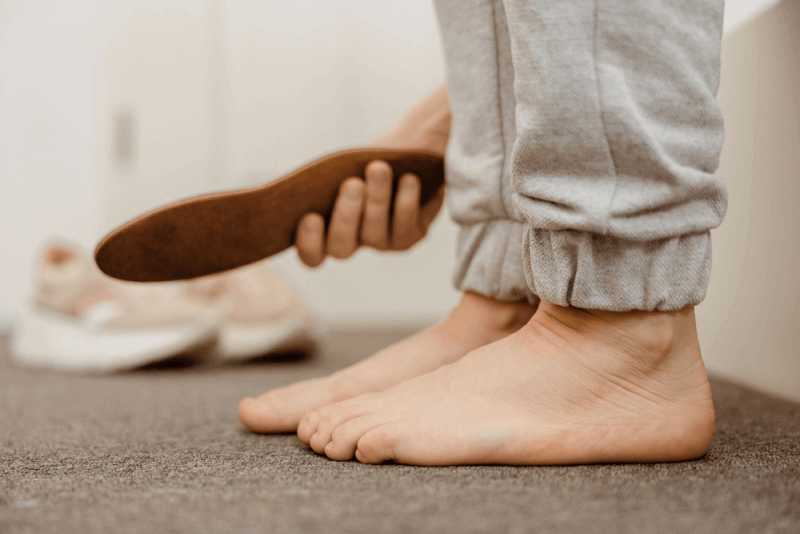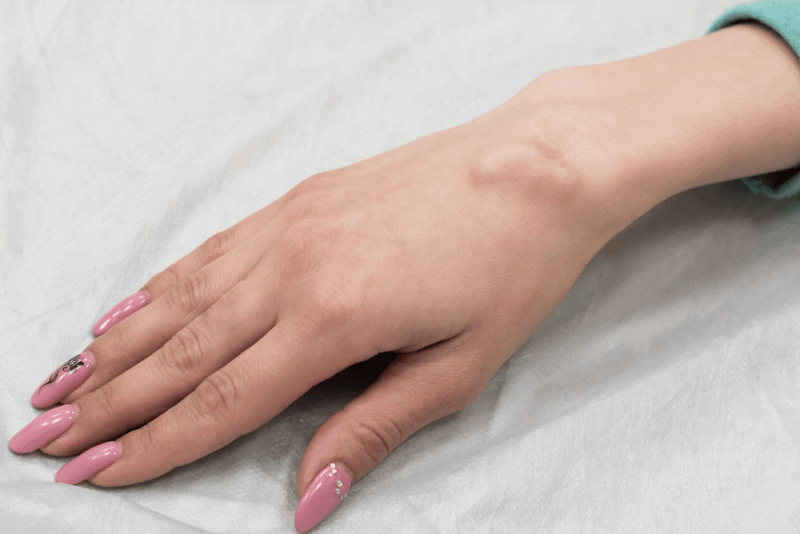What is sciatica?
The sciatic nerve, which is responsible for regulating the sensory and motor functions of the legs, is also the largest nerve in the body. The sciatic nerve is the lowest vertebra 4. and It exits at the 5th vertebra. The nerve then passes through the hip and runs from the back of the knee to the foot. The pain caused by the sciatic nerve, which branches after the knee joint, starts in the lower back and extends to the hip. It then spreads to the foot. The pain experienced when the sciatic nerve, also called the S1 nerve, is pinched for any reason is called sciatic pain or sciatica.
Sciatica pain, which is usually unilateral, is mildly severe at first. The pain then increases in intensity and is felt all over the leg, from the buttocks to the feet. Sciatica, which is more common in young adults than in other age groups, is more common in those who do heavy work and do not exercise.
Sciatica, which causes pain in the leg, also causes weakening of the leg. In severe cases, the reflexes of the knee and ankle joints slow down. The pain increases especially when the patient raises the leg. Although it causes loss of sensation in the leg in more advanced symptoms, it is one of the diseases that can be treated.
Symptoms of sciatica
The characteristic symptom of sciatica is pain that starts in the lower back and extends to the sack. In addition, the symptoms of sciatica include the following.
- Patients feel a pulling sensation from the buttocks to the heels.
- The pain increases with movement.
- Loss of sensation is observed in the areas where the sciatic nerve passes.
- The pain experienced restricts patients' movements.
- It becomes difficult to make the rotational movement.
- The patient's upper body movements become difficult.
- Patients often cannot stand straight and lean in one direction.
- Numbness, tingling and stinging sensations in the feet and the lower part of the toes.
- In severe cases of sciatica, loss of movement is observed.
- The bladder and bowels may become uncontrollable. This requires urgent intervention.
- If sciatica is not treated, the leg muscles become thinner and shorter.
Causes of sciatica
The most effective cause of sciatica pain is hernia. In addition, the factors that cause sciatica vary. Sciatica pain, which is examined under three different categories, is caused by compression of the sciatic nerve in the hip muscles, compression of the sciatic nerve in the lumbar region, and compression of the sciatic nerve due to trauma in the back of the knee joint or in the foot area. Among the factors that cause sciatica pain are the following.
Inactivity
Long periods of inactivity lead to compression of the sciatic nerve. For this reason, sciatica is more common, especially in professions where vehicles are used for long periods of time.
Obesity
Excess weight causes stress on the spine. This can cause the sciatic nerve to be pinched.
Diabetes
Diabetes, which causes damage to the nervous system, also causes sciatica pain.
Advanced age
With aging, the weakening of muscles, bones and tissues around the bones can cause sciatica pain.
Trauma
Trauma and damage to the tissues around the sciatic nerve cause sciatic pain.
Pregnancy
In addition to increasing weight with pregnancy, the enlarging uterus can put pressure on the sciatic nerve. In addition, the growth of the abdomen and breasts will cause the center of gravity of the body to change, resulting in pressure on the root of the sciatic nerve.
How is sciatica diagnosed? Sciatica tests
When patients consult a doctor with a complaint of pain, the physician will first learn the patient's history and description of the pain. At this stage, pain and numbness starting in the buttocks and extending to the feet are distinctive.
The physician then physically examines the patient. During this examination, the patient's muscles are examined for any weakness and reflexes are checked. For this, patients lie in a flat position and are asked to lift the painful leg into the air. Stretching movements are then performed to measure the intensity of pain and other complaints.
Afterwards, the physician may order imaging methods such as CT and MRI to understand in which area the nerve is compressed. In this way, the factor causing sciatica pain is determined and the treatment is shaped according to this factor.
Sciatica pain
Sciatica pain caused by trauma, compression or stretching of the sciatic nerve is commonly known as sciatica. Sciatica pain, one of the diseases known since Hippocrates, can be continuous and mildly severe, or it can occur as sudden and severe pain.
Types of sciatica pain
There are different types of sciatica pain. These types are also effective in determining the treatment.
Acute sciatica
It is a term used for sciatica pain in the initial stage. It is used for sciatica pain lasting between 4 and 8 weeks. The pain is mild and does not require treatment.
Chronic sciatica
It is used to indicate when sciatica pain lasts longer than 8 weeks and the pain intensity does not decrease. Patients need to be treated for persistent sciatica pain.
Alternative sciatica
In alternative sciatica, both legs are affected. Although it is one of the rare types of sciatica, it is usually seen due to degenerative problems in the joints.
Bilateral sciatica
It is the name given to sciatica pain in both legs and at the same time. Sciatica is a rare type of sciatica pain, but it is usually caused by degenerative changes in the vertebrae or discs, or by serious health problems such as caudo echuina syndrome.
Sciatica treatment methods
The treatment of sciatica is planned according to the cause of the pinched nerve and the general health condition of the patient. For treatment to be successful, it is important to start treatment at an early stage. Both surgical and non-surgical methods are used to treat sciatica.
Non-surgical methods
First of all, non-surgical methods are used. These include medicines, physiotherapy, alternative therapies and therapeutic injections. Especially in the case of mild symptoms, painkillers and muscle relaxants can relieve the symptoms.
If drug treatment is not successful, patients are administered epidural steroid injections. These medications are injected into the epidural space around the spine and provide relief from sciatica pain.
Surgical methods
If non-surgical methods are not successful, patients are referred to surgical treatment methods. These methods include lumbar laminectomy and discectomy.
Lumbar laminectomy operations aim to eliminate the factors that cause nerve root compression or irritation. In discectomy procedures, a piece of the bone above or below the nerve root is removed. Both methods have a high success rate in treating sciatica.
Summary of Surgery
Duration of Surgery 1-2 hours
Method of anesthesia General anesthesia
Hospitalization Duration: 1-2 days
Return to Work Period: 2-4 Weeks
Physical therapy methods
Physical therapy is one of the most effective methods in the treatment of sciatica. For this reason, patients should definitely be referred to physical therapists before surgical methods. In addition to physical therapy applied with modern methods, sciatica should be approached holistically.
What should sciatica patients pay attention to?
Since sciatica pain usually originates from the spine, sciatica patients should avoid movements that strain their lower back. In particular, they should avoid bending down and heavy lifting movements by bending down.
Exercises for sciatica
In the treatment of sciatica pain, many types of exercises, especially pilates and yoga, are used. Yoga positions used for the relief of sciatica pain are as follows.
- Knees to chest position
- Cobra position
- Cat and dog position
- Bridge position
Symptoms of sciatic nerve injury after injection
Sciatic nerve injury, which is a condition observed due to chemical damage to the sciatic nerve in injections from the buttocks, occurs especially in inappropriate doses and inappropriate areas.
In case of injection-induced sciatic nerve injuries, patients experience pain during the injection that radiates down the legs and into the heel. In addition, patients have difficulty moving their legs when they stand up.
This situation, which occurs due to injection application by unqualified people, is observed more frequently especially in children and elderly people. EMG and neurological examination are required to diagnose this condition.
In sciatic nerve injury after injection, early diagnosis and physical therapy can lead to recovery. In addition, surgical intervention is required in cases where the nerve has completely lost its function or cannot be controlled despite treatment.













F** K** | 18 Sep 2024